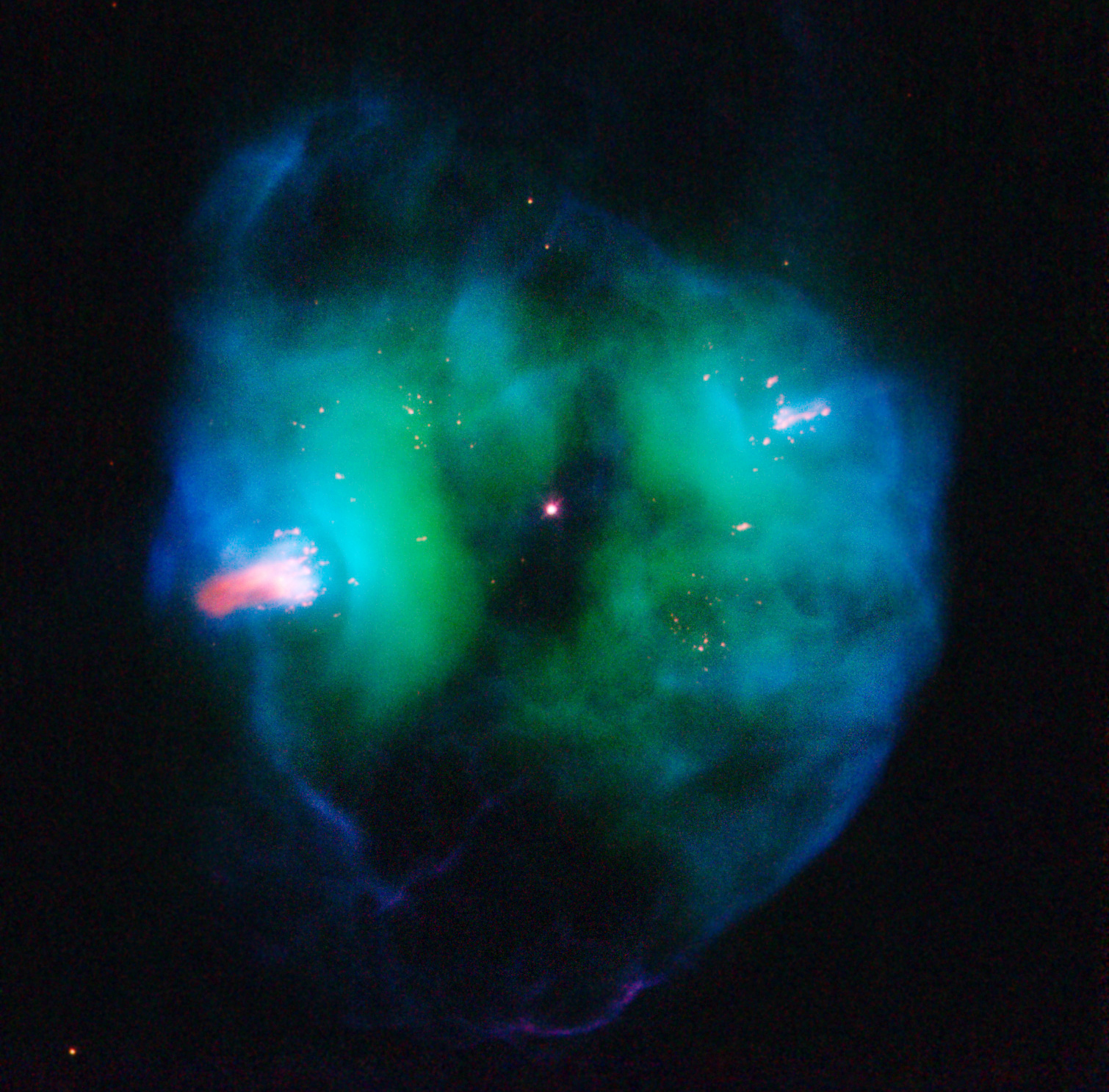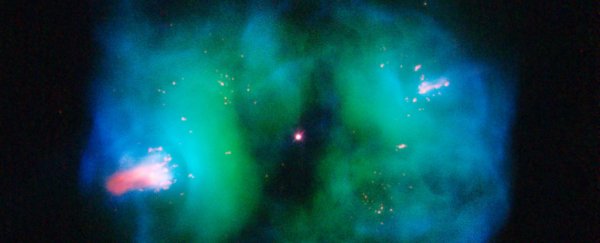If you had to pick, how many planetary nebulae would you say are in the beautiful image above? For those of you playing along at home, planetary nebulae are those gorgeous, painted-looking spherical clouds of gas, which form around stars at the end of their life. And it looks like there are two of them here, right?
Well, it turns out that all that beauty can also be deceptive - because this image captured by the Hubble Space Telescope back in 2007 had astronomers convinced for almost a decade that it was showing two nebulae, rather than just one. And they've only recently figured out their mistake.
The reason this image was so confusing is because planetary Nebulae form around dying stars. During the red giant phase of a star's life, the star flings off its outer layers of gas, forming an expanding shell around itself, while it gradually cools to become a white dwarf.
The expanding shell is the planetary nebula, and usually you'd expect to see the star in the centre of the pretty gas cloud. But in this image, you can clearly see a star in between the two clouds, so you'd assume - as astronomers did - that this was two objects each forming around their own, neighbouring star.
Fascinated by two Nebulae forming so close together, researchers kept a close eye on the region to see if they'd see any strange interstellar fireworks between the two - naming them NGC 2371 and NGC 2372.
But as the European Space Agency explains, thanks to better resolution Hubble images over the passt decade, they've come to realise that there's actually only one star in that cloud, and that's the one you can see in the gap between them.
That means there can only one planetary nebulae - it just happens to be sliced down the middle by a dark line that gives the illusion it's two separate objects.
The nebula is now officially named in William Herschel's New General Catalogue as NGC 2371/2 - a name that reflects its strange, dual history - and with its two lobes, it stretches around 3 light-years across. Even though it's cooling down, the star is currently 25 times hotter than the surface of the Sun, and glows with the luminosity of at least 700 Suns.
In fact, the planetary nebula is so big and bright, you can see it yourself with most amateur telescopes, despite being almost 4,300 light-years away. It's in the Gemini constellation, and can be seen in the latitudes between +90° and -60°.
So why does the nebula look so vibrant aquamarine? That's because the ultraviolet radiation streaming off that super-hot star inside it, is energising the gas in the nebula as it passes through.
And those two pink patches you can see on the image are thought to be jets of gas that were blasted out at some point in the past - they're pink because they're cooler and denser than their surroundings.
The coolest part of all of this is that one day our own Sun will turn into a red giant, and then might (or might not) eventually produce its own planetary nebula before cooling down into a white dwarf. So when you stare at this beautiful image, it gives you a little insight into what the death of our Solar System could look like… and it's nice to know that we'll go out with a bang.

H/T: Gizmodo
